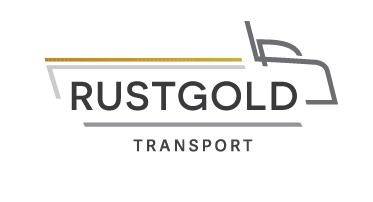Korporatiewe beheer – ’n trust as ’n lid van ’n Beslote Korporasie
Die Wet op Beslote Korporasies No 69 van 1984 (“die Wet”) het voorsiening gemaak vir die oprigting van beslote korporasies wat eenvoudige, gedereguleerde en buigsame entiteite met beperkte aanspreeklikheid is wat veral vir klein ondernemings geskik is. Hulle het eie regspersoonlikheid en geniet die voordele van ewigdurende opvolging.
Die Maatskappywet No 71 van 2008, verbied egter die registrasie van enige nuwe beslote korporasies na 1 Mei 2011. Beslote korporasies kan omgeskakel word na maatskappye, maar maatskappye kan nie meer omgeskakel word na beslote korporasies nie. Reeds bestaande beslote korporasies word egter geadministreer deur die Wet.
’n Beslote korporasie het nie aandeelhouers nie, maar wel lede en aangesien ’n beslote korporasie afsonderlike regspersoonlikheid het, staan dit onafhanklik en verwyderd van sy lede. ’n Beslote korporasie kan uit ’n minimum van een lid tot ’n maksimum van tien lede bestaan. Die beperking op die aantal lede beklemtoon die wetgewer se bedoeling dat die beslote korporasie bedoel was vir kleiner ondernemings, waar die verhouding tussen die lede soortgelyk aan dié van vennote is.
Die Wet stipuleer in Artikel 29 dat slegs natuurlike persone lede mag wees van ’n beslote korporasie. Verder beklemtoon hierdie artikel dat ’n natuurlike of regspersoon in sy of haar kapasiteit as ’n trustee van ’n inter vivos trust ’n lid van ’n beslote korporasie kan wees as daar aan sekere vereistes voldoen word, naamlik:
- Geen regspersoon mag direk of indirek ’n begunstigde wees van daardie trust nie;
- Die lid sal dieselfde regsverpligtinge hê tussen homself of haarself en die beslote korporasie as wat ’n natuurlike persoon sou hê;
- Die beslote korporasie is nie verplig, of het geen verpligting om enige ooreenkoms tussen die trust en die betrokke lid van die korporasie te onderhou of na te kom nie;
- Indien die aantal natuurlike persone wat geregtig is om enige voordeel van die trust te ontvang, ter enige tyd wanneer hulle by die beslote korporasie gevoeg word, aanleiding gee daartoe dat die aantal lede van die korporasie meer as 10 word, sal die bepalings en voorwaardes waarvoor voorsiening gemaak word in hierdie artikel nie meer langer van toepassing wees nie.
Gevolglik sal die volgende persone gemagtig wees om as lede van ’n beslote korporasie te dien:
- ’n Natuurlike persoon
- ’n Natuurlike of regspersoon in sy of haar hoedanigheid as ’n trustee van ’n testamentêre of inter vivos trust wat as verteenwoordiger van daardie trust optree, behalwe indien:
- Die persoon ’n begunstigde van die trust is;
- Die trustee ’n regspersoon is, en direk of indirek beheer word deur enige van die begunstigdes van die trust; en
- ’n Natuurlike of regspersoon in sy of haar verteenwoordigende kapasiteit, insolvent, oorlede, verstandelik gestremd of andersins onbevoegd is om sy of haar eie sake te bestuur, ’n trustee van sy of haar eie boedel is of ’n administrateur, eksekuteur of kurator van sodanige boedel is.
Onderworpe aan die uitsonderings soos hierbo gestipuleer, mag slegs natuurlike persone lede van ’n beslote korporasie wees en mag geen regspersoon ’n ledebelang in ’n beslote korporasie hou nie. ’n Maatskappy of beslote korporasie kan dus nie ’n lid van ’n beslote korporasie wees nie en enige oortreding van hierdie verbod kan tot gevolg hê dat die regspersoon aanspreeklik sal wees vir sekere skulde van die beslote korporasie. ’n Beslote korporasie mag wel ’n lid van ’n maatskappy of vennootskap wees en ’n beslote korporasie kan selfs die beherende aandeelhouer van ’n maatskappy word.
This article is a general information sheet and should not be used or relied on as legal or other professional advice. No liability can be accepted for any errors or omissions nor for any loss or damage arising from reliance upon any information herein. Always contact your financial adviser for specific and detailed advice. Errors and omissions excepted (E&OE)
